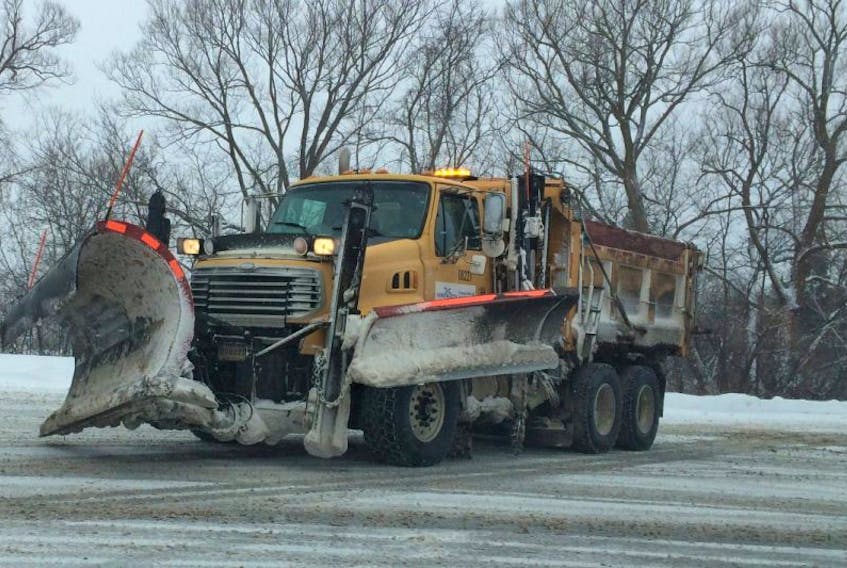When it comes to pre-emptive action, the snow removal crews will often use brine – a salt-water solution – ahead of a storm to keep ice from forming in the first place and even melt some of the snow as it lands.
When it comes to pre-emptive action, the snow removal crews will often use brine – a salt-water solution – ahead of a storm to keep ice from forming in the first place and even melt some of the snow as it lands.
The salt and water are mixed together in machines called brine makers which are automated to ensure the right ratio. The mix is sprayed from tanker trucks.
“The water evaporates and leaves salt residue on the road which keeps ice and snow from bonding to the pavement,” Mitchell explained.
The salt brine can also be used afterward to help melt ice, but that is less common.
When wintery precipitation is actively falling the go-to standard on paved roads is salt. That salt is mined in Pugwash and trucked around Nova Scotia.
Road salt is distributed directly by DoT trucks.
“They have computer controls to measure out the exact amount of salt as they travel,” Mitchell said.
There comes a point where salt is no longer effective though. While if you use enough some people say it will work until -20C, Mitchell said the standard is to stop using it after temperatures reach -10C.
“At a certain point you can’t apply enough to keep the snow melted,” he said. “At some point all it does is make everything slippery.”
At that point they typically switch over to sand or another type of abrasive material such as crusher trust or chemical mixtures.
Since sand is so readily available in the Maritimes, that is the most common material.
Sand is also used exclusively on dirt roads where salt is largely ineffective.
The sand grains have to be a particular size to work properly and so the sand is screened.
Other options for road treatment in winter are magnesium chloride or calcium chloride, but it is usually cost prohibitive, Mitchell said.
He advises people to use caution this time of year and be particularly careful when temperatures fall.
“Slow down and take your time. Leave lots of gaps between you and the vehicle in front of you.”









